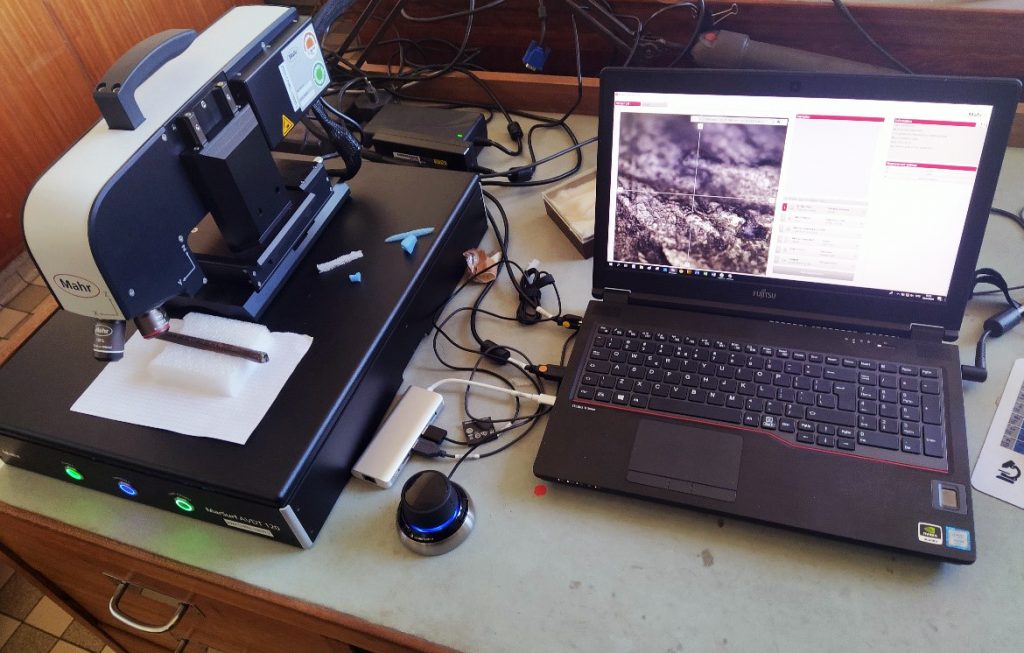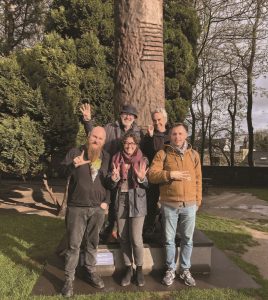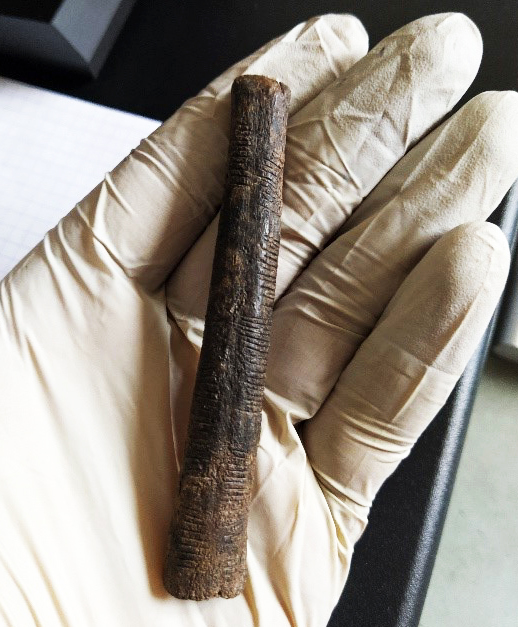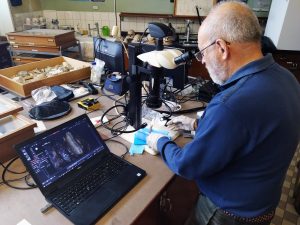The engraved and notched artefacts from Ishango (Democratic Republic of Congo) are currently considered some of the oldest evidence of counting and mathematics, dated back at least 20,000 years ago. Much of these interpretations, however, are still to be tested scientifically. A team of QUANTA researchers from both the University of Bordeaux and the ETH in Zürich travelled to Brussels to better document these findings and reappraise their interpretation.

Author: Lloyd A. Courtenay, University of Bordeaux

In April 2024, members of QUANTA from both the University of Bordeaux (U.B.) and the Eidgenössische Technische Hochschule (ETH) Zürich, travelled to study the collections of the Royal Belgian Institute of Natural Sciences, at the heart of Brussels. The objectives of this trip were to study the archaeological materials housed in the Museum of Natural Sciences, product of excavations carried out by Jean de Heinzelin de Braucourt, throughout the 1950s. Among these prehistoric artefacts lie a number of engraved and notched artefacts, that have sparked much debate ever since their discovery. QUANTA’s objectives are to study the true nature of these artefacts, and critically assess the possibility that these bones could be the key to understanding the emergence of precise quantification among the Later Stone Age populations of this region.

De Heinzelin’s expeditions, conducted during the 1950s in D.R. Congo, explored the area along the Semliki River and Lake Edward and discovered numerous sites and a large quantity of faunal remains as well as bone and stone tools. One of these artefacts bears over 160 parallel notches, organised and separated into distinct groups of varying quantities. In De Heinzelin’s original notes1 and following publications,he noticed the remarkable fact that these distinct groupings make up a number of peculiar quantities, including one face of the bone presenting exclusively prime numbers. These descriptions and drawings have led multiple scholars and mathematics enthusiasts over the years to propose complex hypotheses about what these groupings may imply, interpreting this bone to be one of the earliest evidence of mathematics by early Homo sapiens populations. While tantalising, these observations are at present unsupported by empirical data. Likewise, while a great deal of attention has been paid to the famous Ishango bone, a larger number of notched and engravings artefacts are present in the collections, that are yet to be studied in detail.

The objectives of QUANTA are to truly evaluate how plausible these interpretations are, basing our research on the high-resolution technological analysis of the artefacts themselves, and supported by a wealth of cognitive experiments that investigate the possibility that these bones could have been used for the purpose of storing coded information, or even arithmetical purposes. To do this, QUANTA team members are using high-resolution equipment such as a portable confocal microscope and high quality stereomicroscopes.
Thanks to the support and help of local researchers such as Patrick Semal and Ivan Jadin (The Royal Belgium Institute of Natural Sciences), and Els Cornelissen (Department of Cultural Anthropology and History in Africa Museum, Tervuren), the trip was an enormous success! QUANTA team members were able to produce over 1000 images of different artefacts, including 400 3D scans of an assortment of notches and surfaces that may shed light on the interpretation of these artefacts. On top of this, many synergies between members of the U.B. and E.T.H. took place, in particular on the implications of the objects’ technological analysis for their interpretation. While we have a lot of data to process and work on, QUANTA has made a considerable advance in the study of these artefacts. They will be certainly instrumental to shed light on the origin of complex cognitive tools in early Homo sapiens populations during the Upper Pleistocene.
The Royal Belgian Institute of Natural Sciences made a short film about the QUANTA researchers’ study of the archaeological artefacts in their collections. Watch it on
Instagram:
https://www.instagram.com/reel/C7D3m6rit-J/
Facebook:
https://www.facebook.com/naturalsciencesbelgium/videos/435422806014111/
LinedIn:
https://www.linkedin.com/feed/update/urn:li:ugcPost:7197149421808103425
Twitter/X:
https://twitter.com/nat_sciences_be/status/1791386067645399180
1 Heinzelin, J. (1957a) Les Fouilles D’Ishango, Brussels : Institut des Parcs Nationaux du Congo et du Ruanda-Urundi
